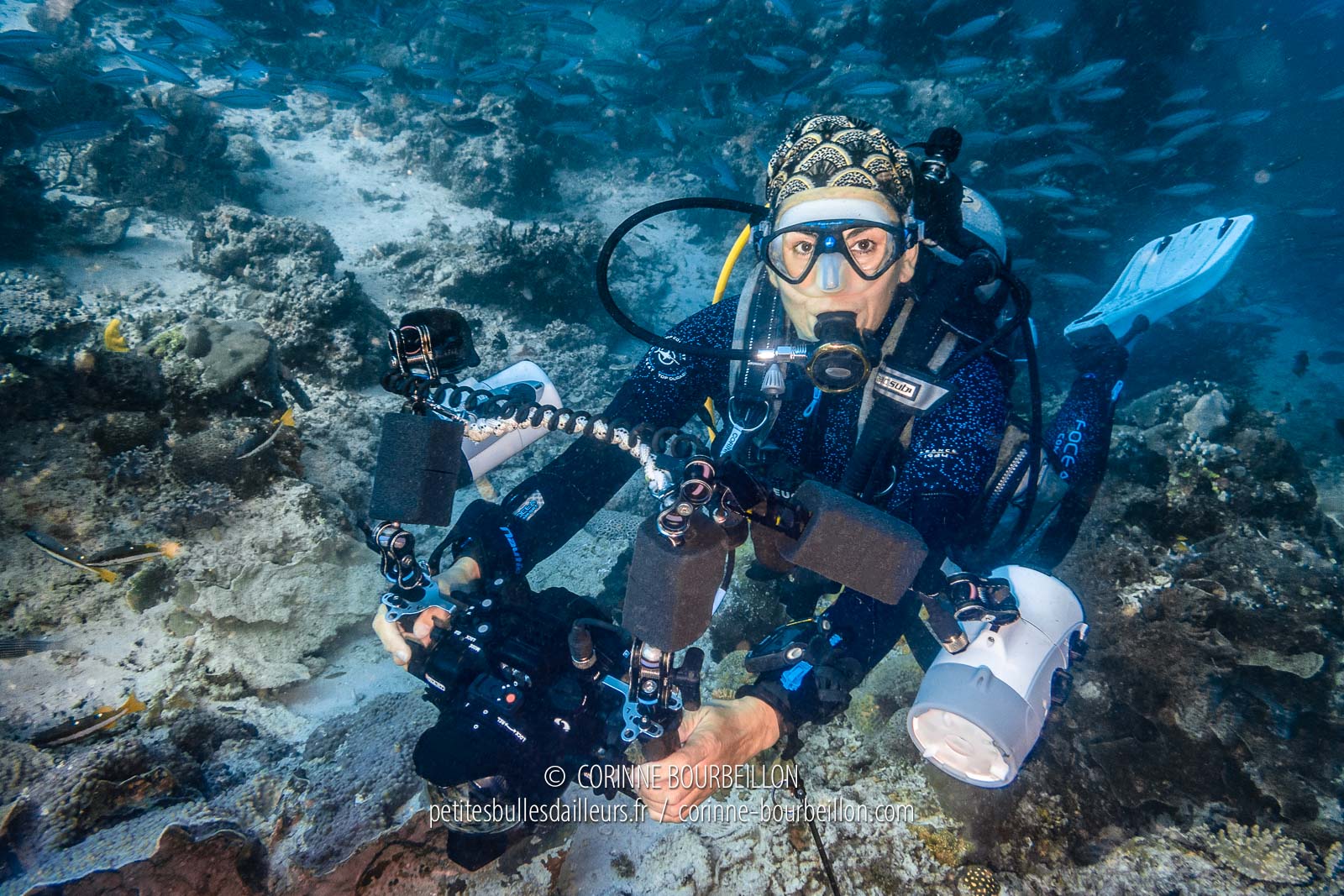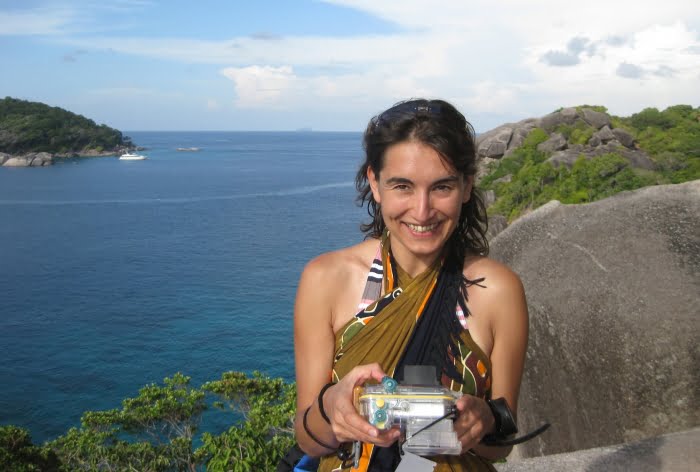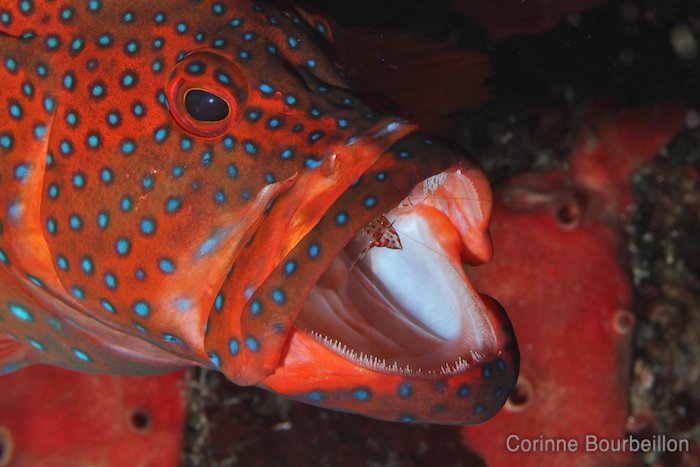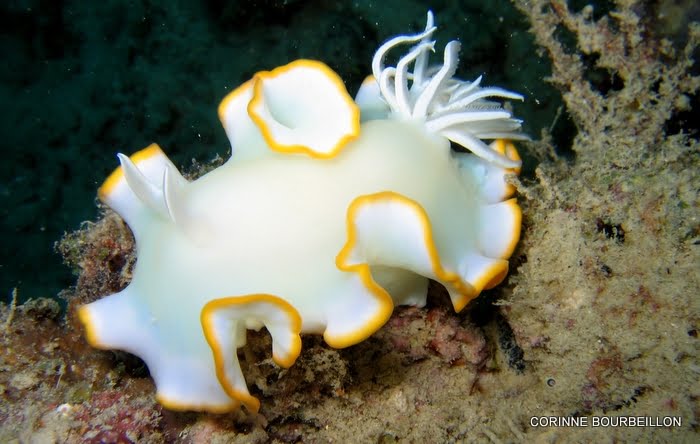Dear English-speaking readers, this page is an automatic translation of an article originally written in French. I apologise for any strange sentences and funny mistakes that may have resulted. If you read French, click on the French flag below to access the original, correct text:
I travel to do underwater photography. So in my luggage, in addition to my clothes, I take all my photo and diving equipment. Namely a hybrid camera (Canon Eos R7) and its waterproof housing to use it underwater, with two underwater strobes, as well as a complete diving equipment!
Clarification: I am not sponsored by ANY of the brands I list below when I detail my photo and diving equipment. I have equipped myself little by little, over the years, according to my needs and budget.
Since 2023: Canon Eos R7
I will test in this year 2023 a new camera, the Canon Eos R7. A hybrid camera, which represents quite a technological departure from my old SLR camera (the Canon Eos 7D, see below). I've just invested in a Nauticam housing to take it underwater with me (photo below). I'll update soon when I've had a bit of experience with my new "toy"...

From 2010 to 2022: Canon Eos 7D
From 2010 to 2022, I did some photography on land and underwater with the Canon Eos 7D. Twelve years, so... You could say that I knew how to make the pleasure last and avoid the overconsumption. I had a lot of fun with it, it's a great device, and I was very happy with it. Its only flaw was that it was a bit heavy. But SLR technology is now outdated, and the performance of today's autofocus on hybrid cameras has encouraged me to finally change my camera.
Below, the material I was using until now.

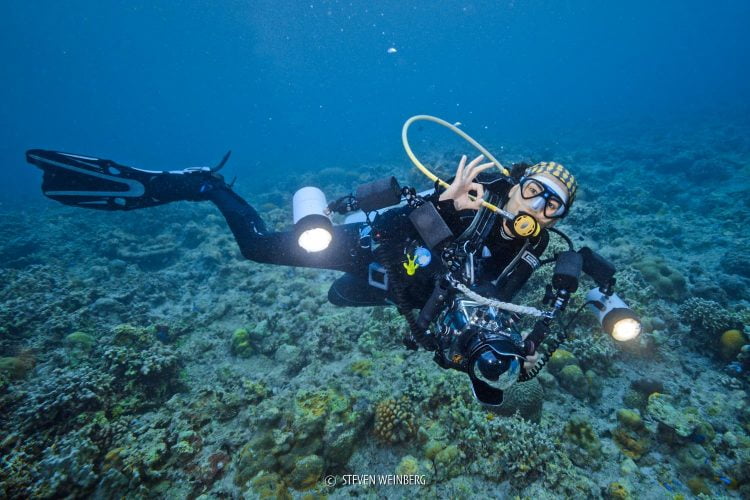
So I took the 7D underwater, in an adapted waterproof case, to take my underwater pictures and videos. The accessories below allowed me a wide angle or more exactly fisheye configuration (10-17 mm) and two macro configurations (60 and 100 mm):
- Waterproof housing : Ikelite for Canon 7D
- Flashes: Ikelite DS161 (I acquired the second one in 2016)
- Macro porthole 1 : Ikelite Flat Port #5502
- Macro porthole 2 : Ikelite Flat Port #5505.45
- Wide angle dome : Dyron Cristal 4.8 inches (small size, ideal for travel)
- Macro lens 1 : Canon EF-S 60mm f/2.8 Macro USM
- Macro Objective 2 : Canon EF 100mm f/2.8L Macro IS USM (top)
- Fisheye lens: Tokina AT-X 107 DX 10-17mm f/3.5-4.5 (Re-top)

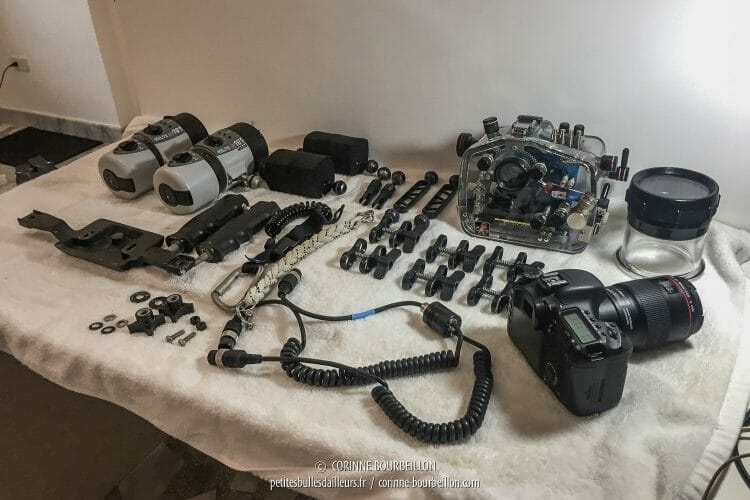
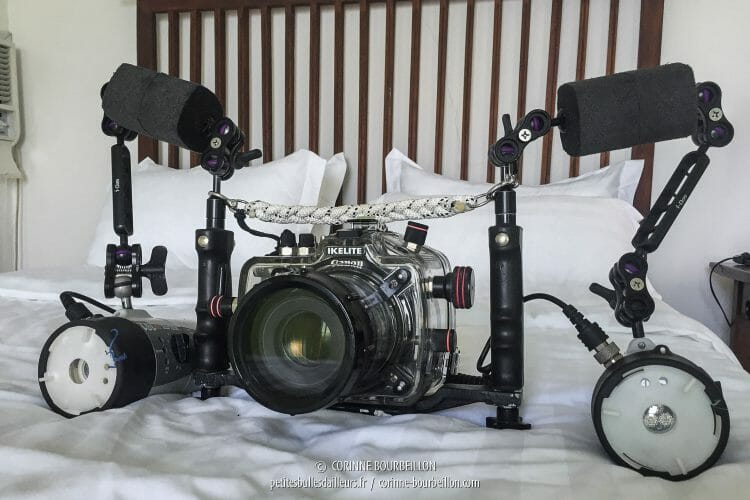
On land, while traveling, I mainly used the following lenses with the 7D:
- Canon 15-85mm f / 3.5-5.6 (IS USM) (supplied with the 7D at the start, zoom rather practical for most situations when travelling)
- Canon 50mm f / 1.8 (STM) (light fixed lens, cheap, bright, top for portraits)
- Canon EF-S 10-18mm f/4.5-5.6 IS STM (cheap wide angle, very correct, good for traveling)
Yes, I was lugging all this little world with me!!! Not to mention, of course, all the chargers, batteries, cords, memory cards, etc. that go with it...
🙃
Before 2010: the Canon Powershot A95, my first underwater camera
My pre-2010 camera equipment was much more modest... This compact, the Canon Powershot A95accompanied me everywhere, during several years, before give up the ghostI took it underwater for my underwater pictures, with the waterproof housing designed for this model: the WP-DC50.
I didn't have any additional lighting at the time, I only used the built-in flash. This limited me to underwater macro photography.
But I was pleasantly surprised, from the beginning, by the quality of the underwater images obtained with this minimal equipment. I used it for 4-5 years and I learned a lot with it. All the underwater pictures below have been taken with this small DSC (digital camera)...
Photographing with a DSLR AND a smartphone
The advantage of a smartphone for terrestrial photos: it is much more discreet and less cumbersome than a SLR. Everyone has this kind of phone in his pocket, now, it allows to draw it at any time without attracting attention ...
I invested in an iPhone X a few months after its release and I am bluffed by the quality of the sensor, really more than enough for souvenir pictures as well as for those intended to illustrate this blog. The iPhone allows me to take pictures when I don't have my 7D at hand, for example on the boat, between two dives, because the SLR is in its housing. Or for all the times when I prefer to walk around lightly, because the 7D still weighs a little...
I had offered me a compact as a backup camera, at the beginning of 2012: the Canon Powershot S100. It allows manual mode, it also shoots in Raw and makes excellent quality video. But since I bought the latest smartphone, I don't use it anymore and I don't take it with me on trips. It's good, it makes one less thing in the bag !
Diving equipment

Regulator: Aqualung Legend LX ACD in stirrup version + Legend octopus + basic mano (great comfort for inhaling and exhaling, ACD system which prevents water from entering the first floor, a bit heavy (2.1kg). The nice little light Mikron model was not yet released when I invested at the time, and the stirrup mount was the most common in Asia, but today I would adopt a DIN.
Diving computer: the Quad of MaresIt's not too expensive, with big and readable characters, switchable in nitrox mode and you can change the battery yourself. It replaced my Puck, from the same brand, that I involuntarily left somewhere at the bottom of the water in the Red Sea in October 2016... I had it for many years, it worked perfectly. (For the veterans: my very first dive computer was a good old Uwatec Aladin, with its famous "fridge" look, it started to unblock all of a sudden, going to dive by itself in a drawer...)
BCD: a basic Seac Sub (it does not even figure anymore on the BCD page of the brand), found a long time ago, for cheap, in a big chain of sport stores (Decathlon). Very sturdy, it still works perfectly since years (it's my first one, I never changed it). It weighs 2,8kg so I plan to invest one day in a lighter and less bulky travel stab, with integrated lead pockets.
Fins: to travel, I tested Scubapro's Go Sport Boot-Fit in 2023, lightweight and short (easy to carry), both flexible and effective in the water. I like them! For a long time, I used a longer pair of Mares Volo PowerI really liked its flexibility, but the canopy is starting to show signs of fatigue.
Booties: for a long time, I kept trying new ones... All of them hurt me, there was always a seam or a reinforcement that created a blister in the long run... Except the Ellie Ergo from AqualungI have definitely adopted them since 2015. No seams on the inside and no zippers. The neoprene is super soft, they fit like socks! But they are fragile: after a few dives, the inner lining frays and the reinforcement on the top of the foot comes off. So I replace them regularly.
Mask: Aqualung Micromask Technisub (very small, comfortable, easy to empty, I love it).
Wet-suit: for dives in warm waters (rarely below 25-26°C except for thermoclines), I always wear 5 mm wet (I even sometimes add a shorty over it or a mouse underneath when the temperature drops into the 20-24°C range). Since 2015, I've been wearing Focea Comfort by Beuchat for women. For diving in "cold" waters (15-20°C) I've adopted the drysuit. I found an old, second-hand Fusion from the days when it was made by Whites (now Apeks or Aqualung). You can open it yourself with the front zip, and it's very comfortable underwater, but you need to dress warmly underneath, as it offers no thermal protection.
Accessories : a stick or "pointer" (metal rod used for many things, very useful to have a support point on the sand when taking underwater photos and to avoid touching anything), a 2,5mm neoprene mouse and/or a Sharkskin top that I systematically put under the wetsuit (I'm very cold), hook, parachute, small lamp, whistle, mirror, knife, octopus clip, various and sundry snap hooks, hoods and hair bands...
And to carry all this?
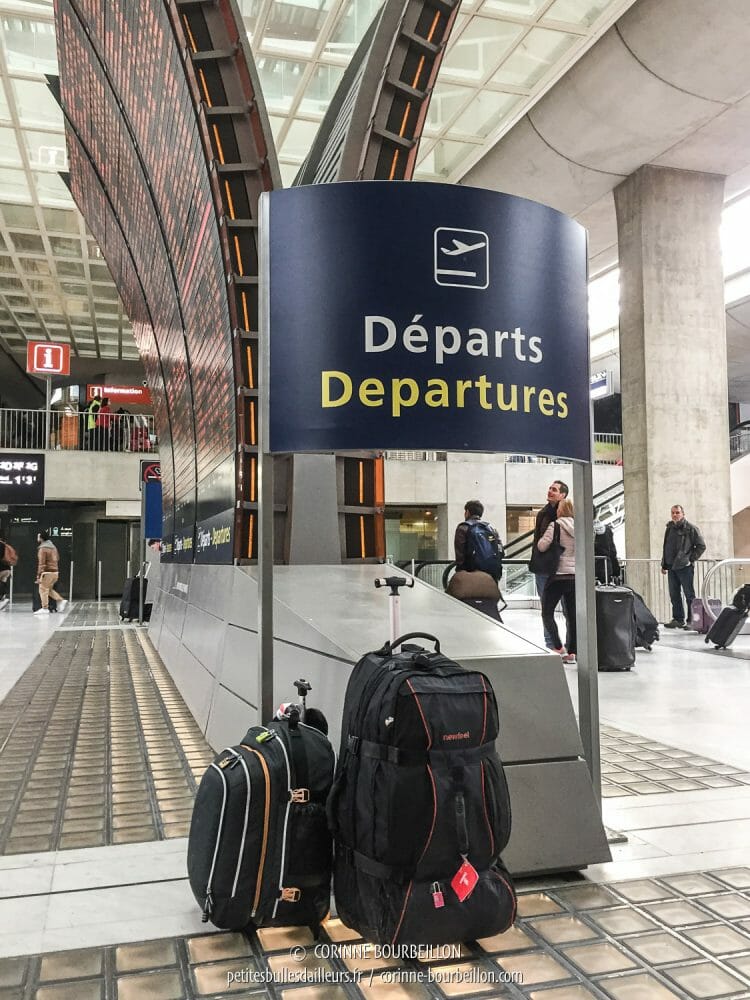
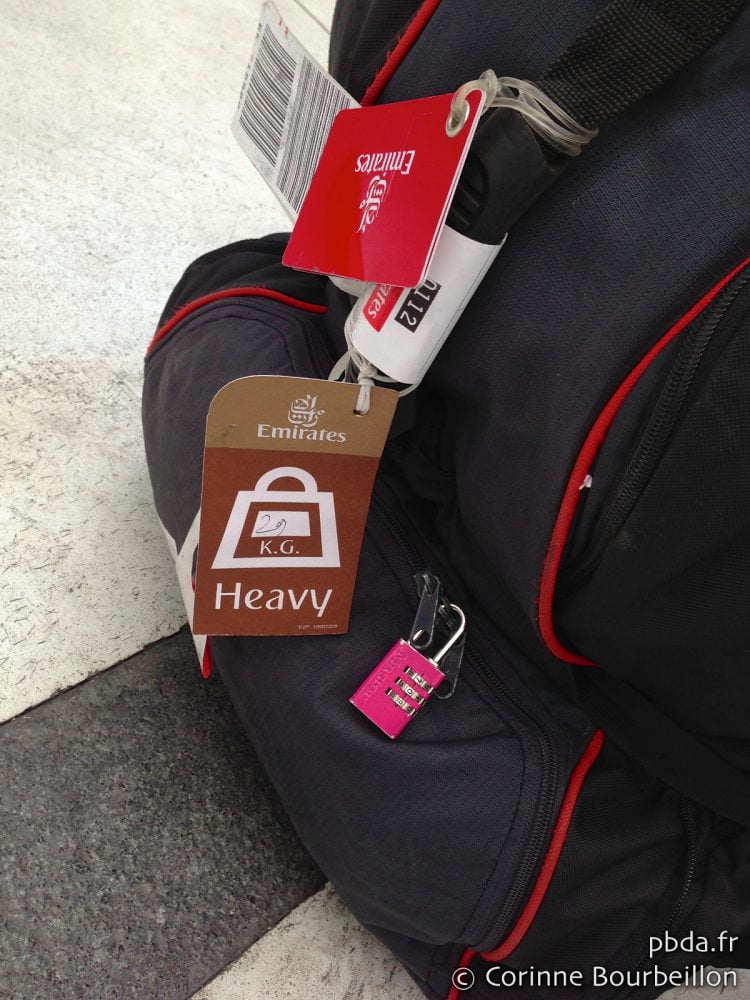
I equipped myself little by little, as much for diving as for underwater photography. As a result, my luggage has also grown little by little. I am not a backpacketeer anymore...
I reviewed my logistics for transporting all my little stuff and opted for wheels! I invite you to read the two articles below where I talk about it:
→ Luggage: which dive bag should you choose for travel?
→ No more backpacks, long live the wheelie bag!
😝

